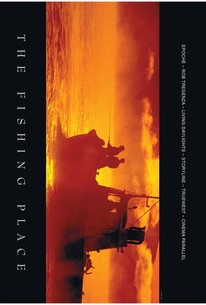The Fishing Place: A Story of War, Redemption, and Moral Ambiguity
If you’re looking for a gripping narrative that weaves together themes of espionage, moral conflict, and the brutal reality of war, look no further than The Fishing Place. This film captures the essence of its action during the German occupation of Norway and highlights the complexities faced by its protagonist, Anna Kristiansen. If you want to experience this gripping story, you can simply download the torrent and immerse yourself in a narrative that is equal parts thought-provoking and suspenseful.
The Setting: a Hydroelectric Town During World War II
The setting for The Fishing Place is the hydroelectric town of Notodden, a significant location during World War II. When Anna is sent to spy on Adam Honderich, a Lutheran minister of the German High Church, the film explores the intersection of faith, morality and resistance. The characters navigate a world of shifting loyalties and ideological divisions, creating a compelling narrative that keeps the viewer engaged.
Anna Kristiansen: A Complex Protagonist
The character played by Anna Kristiansen is riddled with moral dilemmas as she grapples with her newfound freedom granted to her by a Norwegian Nazi officer. Her assignment to spy on a priest suspected of resistance puts her in a precarious position where every decision she makes has disastrous consequences. As she embarks on her mission, Anna must confront her beliefs and the moral ambiguity of her situation.
Conflict and Redemption
The film’s exploration of conflict and redemption is central to its narrative arc. Anna’s journey reflects the larger struggles individuals face in times of war, when the lines between good and evil blur. His interactions with Adam Honderich demonstrate the profound impact of war on personal relationships and spiritual beliefs. The film raises poignant questions about the nature of faith, sacrifice, and the search for redemption amidst chaos.
The Fishing Place: A Metaphor for Freedom
In The Fishing Place, fishing serves as a powerful metaphor for freedom and escape. When Adam Honderich goes fishing, he symbolizes a brief respite from the harsh reality of war. This activity offers a moment of calm and reflection, in stark contrast to the tension and danger that surround Anna. The act of fishing becomes a touching symbol of hope, representing the possibility of finding solace even in the darkest moments.
Visual and thematic diversity
The photography of The Fishing Place captures the raw beauty of Norwegian landscapes, juxtaposing the tranquil nature with the harshness of human conflict. The thematic richness of the film is enhanced by its visual narrative, which engages the viewer in Anna’s inner struggles and the external pressures of her environment. The decision to set the film in a city with hydroelectric power plants adds additional layers to the narrative, reflecting the duality of progress and destruction during wartime.
The impact of war on culture
While Anna fulfills its mission, the film sheds light on the cultural changes in Norway during the German occupation. The fusion of Norwegian and German influences creates a complex, rich and tense social fabric. This cultural background is a crucial element in understanding the characters’ motivations and the choices they make throughout the film.
Conclusion: A film not to be missed
The Fishing Place is a moving film that delves into the depths of the human experience during one of the darkest periods in history. Its exploration of moral ambiguity, the brutal reality of war and the search for redemption resonates with audiences.





 31/47
31/47










 Đang Online: 0
Đang Online: 0 Xem hôm nay: 46
Xem hôm nay: 46 Tổng lượt xem: 6,909,021
Tổng lượt xem: 6,909,021